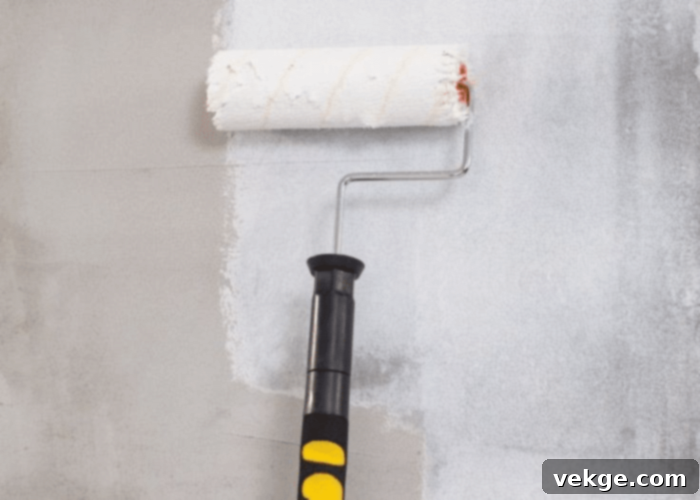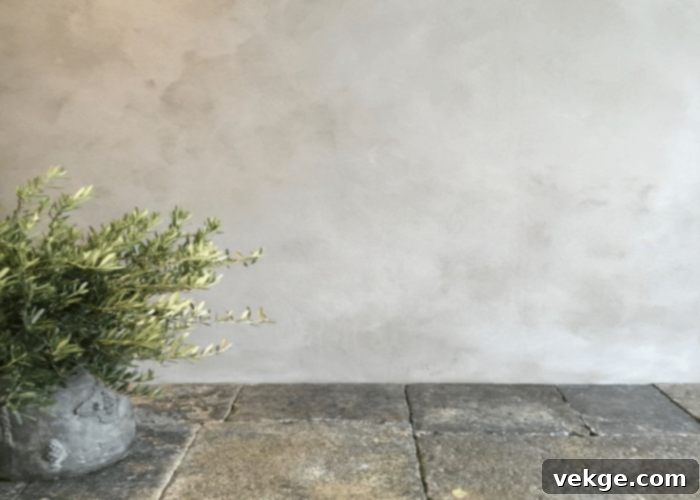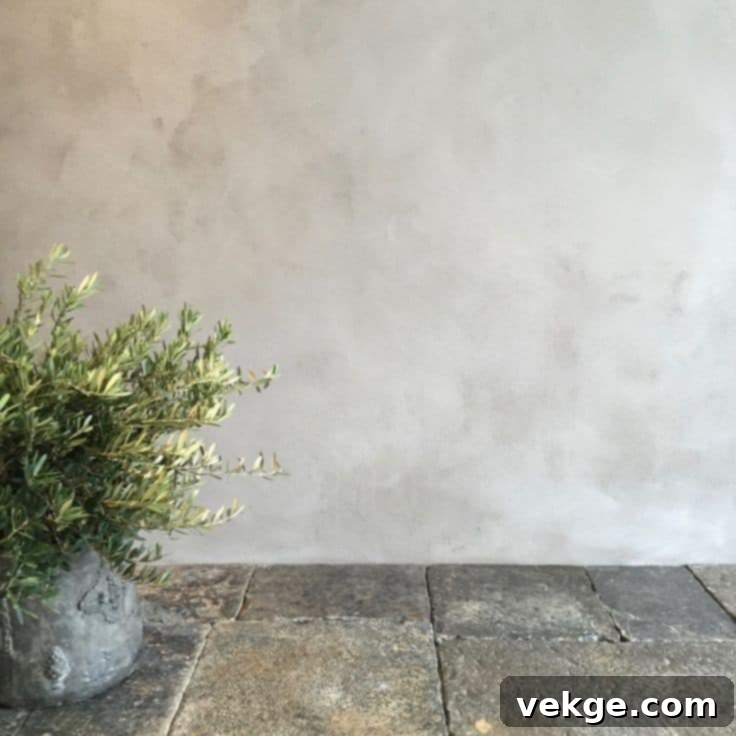The Ultimate Guide to Limewash on Brick: Maximizing Longevity and Aesthetic Appeal
Limewash, an ancient and increasingly popular finishing technique, offers a unique aesthetic and practical benefits for both interior and exterior brick surfaces. Far from being just another paint, limewash is a natural, breathable coating made primarily from lime, water, and mineral pigments. When applied to brick, it creates a soft, matte, and chalky finish that gracefully patinas over time, offering a rustic yet sophisticated charm that traditional paints simply cannot replicate.
For centuries, builders and homeowners have chosen limewash for its distinctive character and protective qualities. Its historical roots are deep, having been used on structures from ancient Roman villas to European farmhouses. This enduring appeal isn’t just about aesthetics; limewash is celebrated for its ability to prevent moisture buildup within walls and promote healthier indoor air quality, thanks to its natural composition and breathability. It’s an affordable and relatively easy-to-apply option that brings an authentic, aged look to any brick surface, transforming ordinary walls into architectural statements.
What Makes Limewash So Special for Brick?
The magic of limewash lies in its unique properties. Unlike modern paints that form a plastic-like film on the surface, limewash penetrates and bonds with the masonry, allowing the brick to breathe. This process, known as calcification, creates a durable, mineral bond that becomes part of the wall itself. This results in a finish that isn’t just beautiful but also incredibly functional.
Unparalleled Aesthetic and Texture
One of the primary reasons for limewash’s resurgence is its stunning visual appeal. It delivers a translucent, mottled, and velvety finish that allows the natural variations and textures of the brick to subtly show through. This creates a depth and character that is impossible to achieve with opaque paints. The soft, diffused light reflection and the ever-so-slight variations in tone give limewashed walls an organic, artisan quality that instantly elevates a space, lending an air of timeless elegance and rustic authenticity.
Superior Breathability and Moisture Regulation
A key advantage of limewash, especially on brick, is its breathability. Limewash is highly permeable, meaning it allows moisture vapor to pass through the wall system. This is crucial for brick, which can often trap moisture if coated with non-breathable paints. By allowing the wall to ‘exhale,’ limewash actively prevents moisture buildup, significantly reducing the risk of dampness, mold, mildew, and efflorescence (the white, powdery salt deposits that can appear on masonry). This makes it an excellent choice for older homes or areas prone to humidity.
Eco-Friendly and Health-Conscious Choice
Composed of natural minerals, primarily lime, limewash is an environmentally conscious choice. It typically has very low to zero Volatile Organic Compounds (VOCs), contributing to better indoor air quality compared to many synthetic paints. Its natural antimicrobial and antifungal properties also help inhibit the growth of bacteria and fungi, fostering a healthier living environment. For those seeking sustainable and healthy home solutions, limewash stands out as a superior option.
How Long Does Limewash Really Last on Brick?
While limewash boasts numerous benefits, its perceived durability compared to conventional paint is often a point of discussion. It’s true that limewash behaves differently from acrylic or latex paints; it doesn’t form a thick, impermeable film designed to resist every scratch. However, when applied correctly and maintained properly, a quality limewash finish on brick can last a considerable amount of time, often between 5 to 10 years, and sometimes even longer in ideal conditions. After this period, it typically doesn’t peel or chip dramatically like failing paint but rather slowly fades, becoming thinner and more translucent, gracefully revealing the brick beneath.
The exact lifespan of your limewash finish is not set in stone and is significantly influenced by several critical factors:
- Weather Conditions and Exposure: Exterior limewash is constantly exposed to the elements. Intense UV radiation from direct sunlight, heavy rainfall, freeze-thaw cycles, and strong winds can accelerate the fading process. Sheltered areas will generally see a longer lifespan than highly exposed walls.
- Quality of Application: A meticulous application process, including thorough surface preparation, correct dilution, and the application of multiple, thin coats, is paramount for durability. Rushed or improper application can drastically reduce longevity.
- Quality of Materials: The quality of the lime and pigments used in the limewash mixture plays a significant role. High-quality products from reputable manufacturers contain better binders and pigments that resist fading and degradation more effectively.
- Surface Preparation: The cleaner and better-prepared the brick surface, the stronger the bond between the limewash and the substrate, directly impacting how long it adheres and performs.
- Ongoing Maintenance: Regular inspection and timely touch-ups are vital. Addressing minor issues before they become major problems can significantly extend the life of your limewashed brick.
Understanding these variables allows you to take proactive steps to ensure your limewash investment provides lasting beauty and protection for your brick surfaces.
Maximizing Limewash Longevity: Essential Application and Maintenance Tips
To truly unlock the long-term beauty and durability of limewash on your brick, a thoughtful approach to both application and ongoing care is essential. Following these guidelines will ensure your limewashed surfaces remain stunning for years to come.
-
Thorough Surface Preparation: The Foundation of Durability

Before any limewash touches your brick, the surface must be impeccably clean and structurally sound. This is perhaps the most critical step for proper adhesion and overall durability. Begin by thoroughly cleaning the brick to remove all dirt, dust, grime, efflorescence, mildew, and any loose particles. A stiff brush and water are often sufficient for light cleaning. For tougher stains or heavily soiled surfaces, a gentle power wash (at low pressure to avoid damaging the mortar) or a specialized masonry cleaner can be employed. Ensure any efflorescence is brushed away, and any existing flaking paint or crumbling mortar is addressed and repaired. The brick should also be completely dry before application begins, though a slightly damp (but not wet) surface is often recommended immediately prior to limewash application to aid absorption.
-
The Critical Role of Priming

While some limewash products may claim to be self-priming, the application of a dedicated mineral-based primer is often a game-changer for enhancing adhesion and ensuring a more consistent finish. Primer acts as an essential bonding agent, creating an optimal surface for the limewash to adhere to. It helps to equalize the porosity of the brick, which prevents the limewash from being absorbed too quickly or unevenly, leading to a patchy appearance. By ensuring a strong, uniform bond, primer significantly contributes to the overall durability and longevity of your limewash finish, making it less prone to premature fading or flaking.
-
Applying Multiple, Thin Coats for Superior Protection

When it comes to limewash, the adage “the more, the merrier” truly applies, but with a crucial caveat: multiple thin coats are always preferable to one thick coat. Limewash is designed to be built up in layers. Each successive thin coat allows the lime to carbonate and bond more effectively with the surface and previous layers, creating a stronger, more protective, and visually rich finish. Typically, two to three coats are recommended, with adequate drying time (as specified by the manufacturer, often 24 hours) between each application. This layering approach not only enhances the depth and translucency of the color but also provides significantly better protection against weathering and wear, thereby extending the overall lifespan of the limewash.
-
Protecting Against the Elements: Using Sealers and Topcoats

For exterior limewashed brick, particularly in areas exposed to harsh weather conditions such as heavy rains, extreme temperatures, or coastal environments, applying a breathable clear sealer or topcoat can significantly bolster its resilience. It’s crucial to choose a sealer specifically designed for limewash or mineral paints, as conventional sealers can compromise the breathability of the limewash, leading to moisture issues. A compatible sealer will add an extra layer of protection against water penetration, UV degradation, and environmental pollutants without detracting from the natural, matte finish. This added barrier helps to preserve the color and integrity of the limewash, extending its beautiful appearance and protective qualities.
-
Investing in High-Quality Limewash Products

The quality of your limewash mixture, including the lime itself and any added pigments or binders, profoundly impacts its final performance and longevity. Opting for high-quality, pre-formulated limewash from reputable manufacturers ensures you’re getting a product with properly slaked lime, finely ground mineral pigments, and the right balance of additives for optimal workability and durability. Inferior products may lead to uneven color, poor adhesion, and premature fading or chalking. Investing a little more in premium materials will pay dividends in terms of a more beautiful, long-lasting finish that truly performs as expected.
-
Regular Maintenance and Timely Touch-Ups
Even with the best preparation and application, ongoing maintenance is crucial for maximizing the lifespan of limewash. Periodically inspect your limewashed surfaces for any signs of wear, such as slight fading, minor localized discoloration, or small areas of exposure due to impact. Limewash is incredibly forgiving when it comes to touch-ups; minor imperfections can often be blended seamlessly with a fresh coat applied to the affected area. Regular cleaning with plain water and a soft brush can also help remove surface dirt without damaging the finish. By proactively addressing small issues, you can prevent them from escalating and ensure the continuous beauty and protection of your limewashed brick for many years.
Limewash vs. Traditional Paint: A Durability Perspective
While traditional paints often boast a longer guaranteed lifespan before peeling or cracking, their failure mechanism is typically more abrupt and visually jarring. Limewash, on the other hand, ages gracefully. Its natural fading and chalking are often seen as part of its charm, developing a beautiful, soft patina rather than deteriorating unsightly. This ‘living finish’ means that while maintenance might involve periodic re-coating, the result is an evolving aesthetic that retains its inherent character.
Conclusion
Choosing limewash for your brick surfaces is more than just a decorative decision; it’s an investment in a durable, breathable, and historically rich finish that offers both aesthetic appeal and practical benefits. Beyond its ability to create stunning, rustic aesthetics, limewash promotes healthier living environments by allowing walls to breathe and deterring mold growth. While its longevity is influenced by several factors, including climate and application quality, the maintenance required is straightforward and rewarding.
If you’re considering limewash for the first time, rest assured it’s a manageable project that yields impressive results. The keys to success lie in diligent surface preparation, the judicious use of primer, the application of multiple thin coats, and opting for high-quality materials. Embracing regular maintenance, including timely touch-ups, will ensure your limewashed brick retains its captivating beauty for years to come. By following these expert guidelines, you can transform your home with a finish that is not only visually stunning but also inherently good for your walls and your environment.
